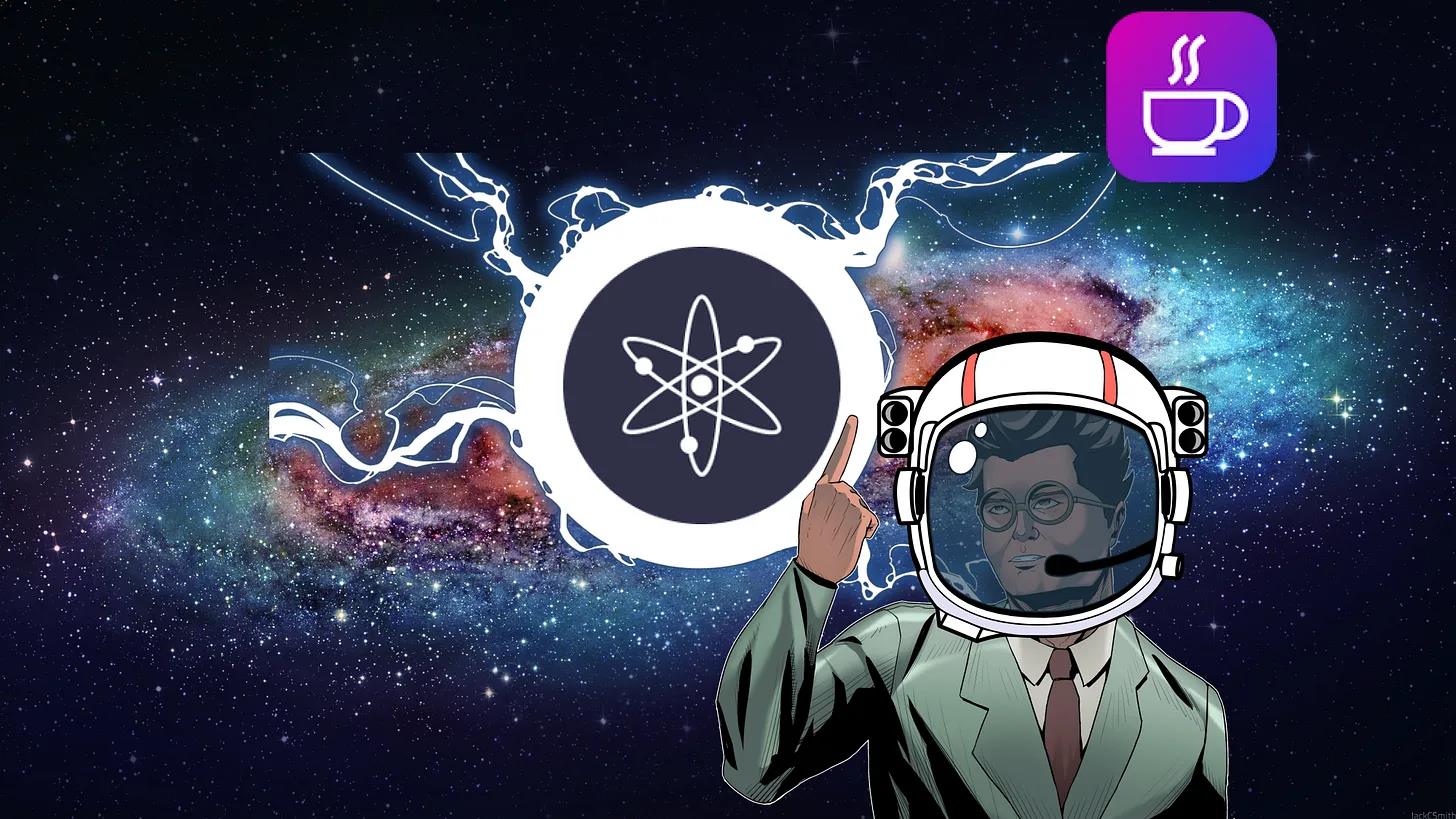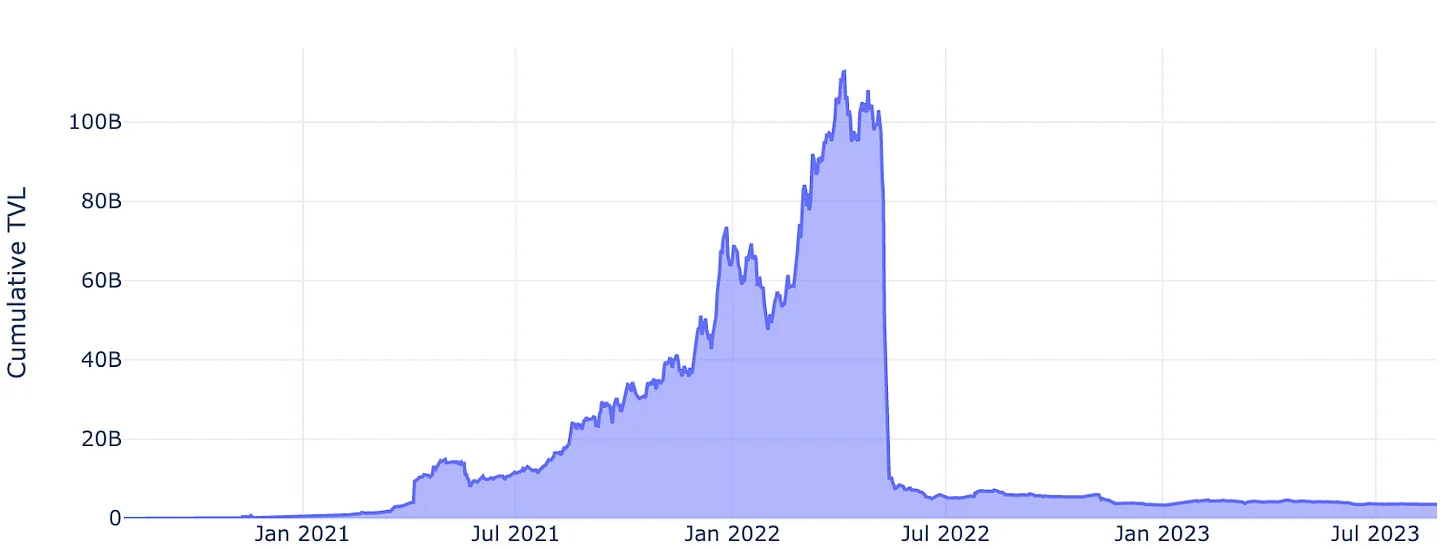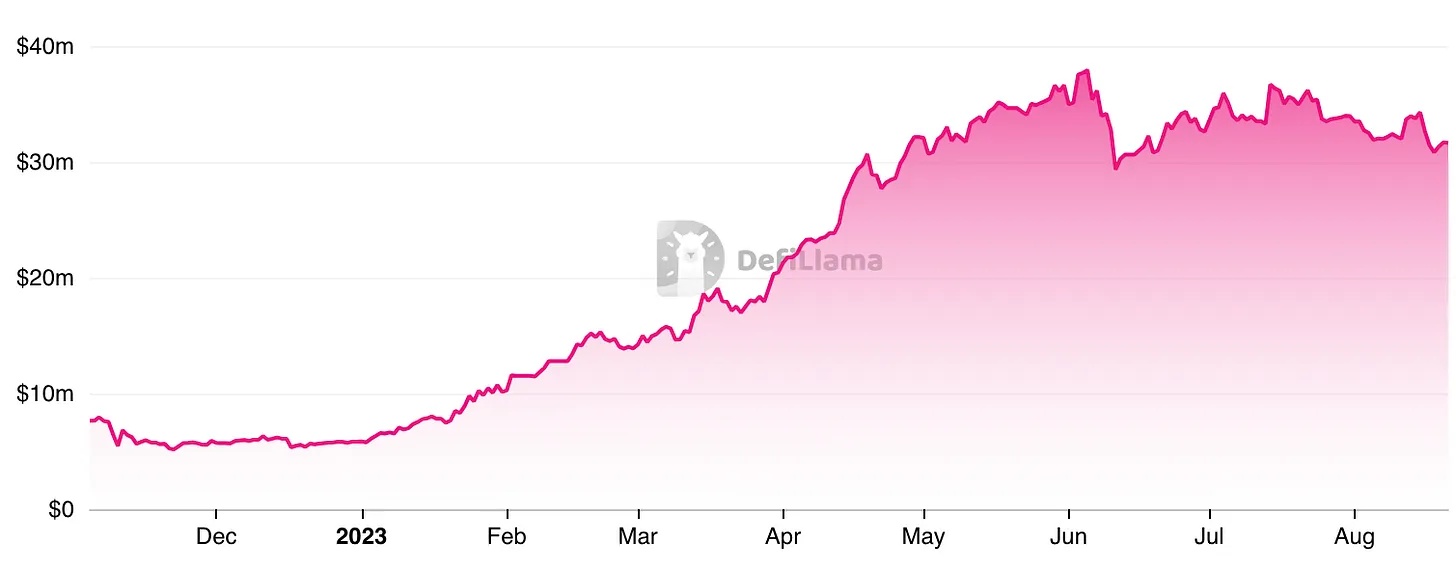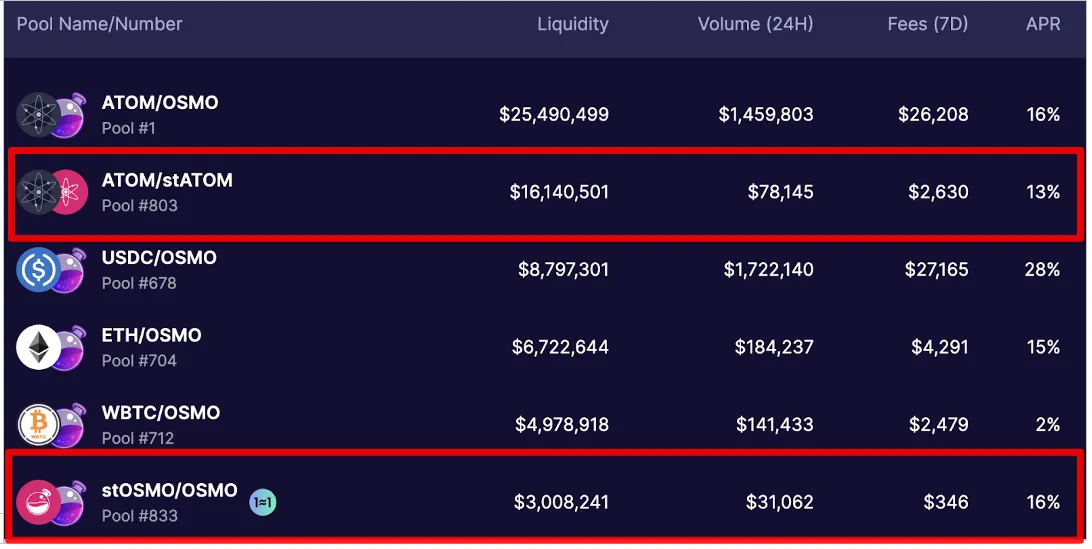Original author: KODI
Compilation of the original text: Deep Tide TechFlow

THORchain (RUNE) is a lending protocol that allows users to exchange assets between blockchain networks. It just launched a new lending primitive. The following is THORChains description:
New loans have a deflationary effect on $RUNE assets, while loan closings have an inflationary effect on $RUNE.
If the value of $RUNE remains the same relative to $BTC when the loan is opened and closed, there is no net inflationary effect on $RUNE (equal amounts burned and minted, minus exchange fees). However, if the collateral asset increases in value relative to $RUNE between loan opening and closing, this will result in net inflation of the $RUNE supply.
Therefore, THORChain’s new mechanism simply algorithmically increases and decreases the supply of $RUNE tokens. Remember what happened the last time we had a mechanic like this? Thats right, our old friend LUNA!
For those who don’t know, Terra is a blockchain project that aims to create a stablecoin called UST. Through an algorithmic system involving LUNA (Terra’s native token), this stablecoin will maintain a 1:1 peg to the U.S. dollar.
It was very successful at first.
After USTs circulating supply reached $18 billion, it quickly lost its anchor, causing the entire Terra ecosystem to collapse and briefly dragging down the broader cryptocurrency market.
LUNAs market capitalization plummeted from $40 billion to almost zero, and the prices of Bitcoin and Ethereum each fell by more than 30%. As for UST, it is currently trading at $0.0128.
But when the story of LUNA is told, one chapter is often overlooked.
LUNA is built on Cosmos, an ecosystem of different blockchains, all connected to the main Cosmos (ATOM) chain. It is built using the Cosmos SDK, uses Tendermint as the consensus algorithm, and the whole process is very complete. It is also one of the most successful Cosmos chains, far more than any other chain.
So it’s no surprise that the cumulative total value locked (TVL) of the Cosmos ecosystem today looks like this:

Guess when LUNAs crash happened.
Cosmos projects that relied on or were being built on LUNA have collapsed, and many Cosmos projects also rely on UST as the main stablecoin.
Liquidity in the ecosystem drops dramatically. Osmosis (OSMO) is one of the leading decentralized exchange projects in Cosmos. Before the collapse of LUNA, its total value locked (TVL) peaked at $1.7 billion in April 2022, but by June 2022, Only $150 million in locked value remains, a 91% drop.
In comparison, the TVL of Uniswap and Curve dropped only 30% and 55% respectively during the same period.
So, yes, the LUNA disaster is bad for everyone in the cryptocurrency industry, but it is especially bad for Cosmos. And it hasnt recovered to this day.
In the words of Zaki Manian, a well-known figure in the Cosmos ecosystem:
It could take up to a year for Cosmos to find a way to create something unique and different that differentiates it from Ethereum or the rest of the blockchain space, making it a coherent independent entity.
So what can bring the universe back from the brink of death?
What does Liquid Staking do for us?
Here is a chart of Ethereum’s total value locked (TVL) in ETH over the past two years.
If we subtract Liquidity Collateralized Derivatives (LSDs), this is Ethereum’s total value locked (TVL) over the past few years.
There is indeed a big difference.
Note that the last chart incorporates the LSDfi project, where you can deposit liquid staking tokens like Lido’s stETH. If we exclude these projects, we see a lower total locked value of just 12.5 million ETH.
Therefore, Ethereum’s total value locked in USD terms is expected to decline during the 2022 bear market. However, without the help of liquidity staking, Ethereum’s total locked value in ETH will also see a sharp decline in 2023.
Of the entire 26 million ETH, the liquidity staking protocol holds 11 million ETH. This accounts for almost 42% of the total ETH locked, and 10% of the total supply. Not bad for an industry that was in its infancy less than six months ago.

Additionally, liquidity staking brings much-needed energy and innovation to DeFi.
There is currently approximately $1 billion stored in as many as 25 LSDfi protocols that did not exist at the beginning of this year. And more protocols will be launched in the coming months.
This is the liquidity Cosmos desperately needs if it wants to survive.
New Hope for Cosmos
The goal of the Cosmos Network is to realize the vision of the App Chain: each application is its own PoS blockchain, and they are connected to each other.
But the problem is, this means that almost all of the value is locked on-chain, used to stake its native token to secure the network.
In contrast, Ethereum only has ETH staked. This allows a large number of tokens, from DeFi tokens to stablecoins to NFTs, to be freely used in the Ethereum ecosystem.
LSD can release these dormant values in the universe. By allowing stakers to mint derivative tokens representing their staked assets, liquidity can flow freely again.
And, since staking is so core to Cosmos, adoption of the LSD platform is likely to be very rapid and widespread.
Staking is relatively new to Ethereum, and it didn’t even enable withdrawals until the Shapella upgrade in April this year.
In contrast, all Cosmos chains are PoS from the beginning.
This results in a much higher staking ratio for the Cosmos chain.
But keep in mind that the liquidity staking path on Ethereum is a two-step process: first, ETH is staked, and then a portion of it flows into LSDs.
Cosmos can bypass this initial phase because a large number of tokens are already staked. Staking requirements are already built in.
LSD may even incentivize more users to stake since their tokens no longer need to be locked. If you can continue to use the token throughout the ecosystem, why not get additional benefits?
And those payoffs are pretty substantial. The annualized staking yields of ATOM and OSMO are 19% and 11% respectively. Ethereum’s annualized return is around 4%, which is declining rapidly as the number of validators increases.

This massive influx of liquidity could greatly expand the DeFi potential on the Cosmos chain. Decentralized exchange projects like Osmosis are likely to achieve exponential growth in terms of total value locked (TVL) and trading volume. Other areas such as lending or stablecoins will also benefit greatly from higher liquidity.
In addition, the cross-chain characteristics of Cosmos are very suitable for LSD products. The Inter-Blockchain Communication (IBC) protocol connecting the Cosmos chain can enable new LSD products that interact seamlessly between multiple networks.
For example, LSD Vault can leverage IBC to optimize liquidity mining across networks. Or via IBC transfers, liquid collateral assets can power lending markets and margin trading throughout the ecosystem.
Due to the existence of IBC, the composability of LSD on the Cosmos chain may quickly surpass the innovation on Ethereum. This could be the secret recipe that allows Cosmos to unlock the true disruptive potential of staking.
I know what youre thinking.
If liquidity staking is such a huge opportunity for the Cosmos ecosystem, why hasn’t it taken off yet? The main reason is that there are no efficient and proven liquidity staking solutions in the ecosystem. But that may be changing.
It’s not that liquidity staking has never been tried in Cosmos.
pStake Finance, the native LSD solution from Cosmos Chain Persistence, has been running since February 2022. Quicksilver launches in May 2023. However, their total locked values were around $3 million and $2 million respectively, failing to make a splash.
Now, Stride (STRD) is on the scene.
Stride is another Cosmos chain that offers liquidity staking. But unlike previous projects, its gaining traction.

Since its launch in late 2022, Strides Total Value Locked (TVL) has grown rapidly to over $30 million until peaking in June 2023, after which adoption slows and the price of many tokens on Cosmos begins to drop. However, its price has not dropped in terms of its native token.
Its LSD tokens (stATOM and stOSMO) are also gaining traction in Cosmos’ DeFi space, with two pools (ATOM/stATOM and OSMO/stOSMO) taking second and sixth place respectively in Osmosis’ TVL ranking.

Indeed, Strides stATOM/ATOM pool has amassed a total value locked (TVL) of $16 million, while Quicksilvers qATOM/ATOM pool is only $1 million, and pStakes TVL is even lower at $500,000.
The differences are even more pronounced when comparing stOSMO and qOSMO pools. Strides stOSMO/OSMO pool has a TVL of $3 million, while Quicksilvers qOSMO/OSMO pool is just under $100,000, less than 3% of its Stride counterpart pool. pStake doesnt even have an OSMO pool, as the only liquidity staking token it provides in Cosmos is ATOM.
Were not trying to bash Quicksilver or pStake. But its clear that with its innovation, Stride has finally made people see the potential of LSD on Cosmos.
Part of the reason is that its so easy to use. Staking only takes a few clicks, and Stride’s interface is very simple and clear.
In the crypto space, we often overlook good user experience.
Stride even selects validators for you when staking so you don’t have to go through the tedious selection process.
Additionally, Stride recently joined Cosmos’ Interchain Security (ICS) to further secure its network. ICS allows validators from provider chains like the Cosmos Hub to secure consumer chains like Stride by using ATOMs.
As a result, Stride now uses Cosmos Hubs validators instead of its own validators.
The main benefit is a substantial increase in the value backing Strides security, from approximately $25 million in staked STRD tokens to $1.8 billion secured by ATOM stakers. This makes it much more difficult for individuals or groups to attack the network. Enabling ICS also further aligns Stride with Cosmos.
The Next Frontier for LSD
I bet liquid staking could, if not change the universe, at least rekindle the fire in the hearts of users. This will bring much-needed attention and liquidity to the ecosystem.
The growth of LSD on Ethereum this year has been astounding. But because of the way the network is set up, this may represent only a small fraction of the opportunities offered by LSD. IBC may enable Cosmos to unleash the disruptive potential of LSD beyond other ecosystems.
We also think Stride will become the dominant LSD solution in the universe, given its impressive growth and significant use of interchain security.
Given the damage caused by LUNAs collapse, the road ahead remains challenging. But if anyone can help Cosmos achieve phoenix-like nirvana, it is Cosmonauts (referring to the users of Cosmos).









